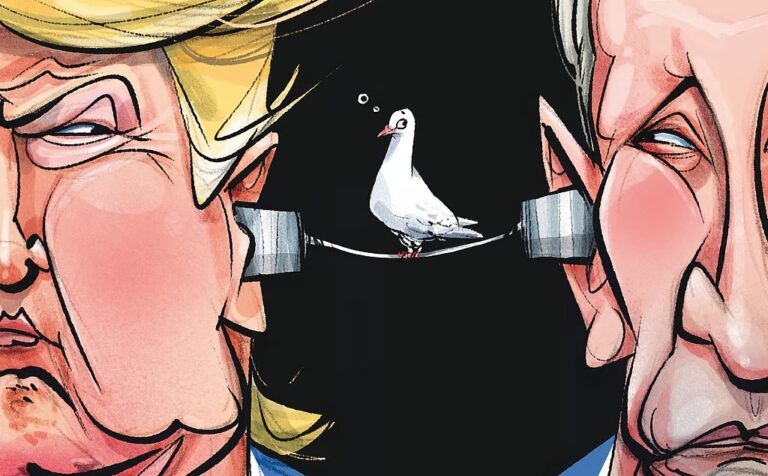By Katrina vanden Heuvel Via Washington Post At Wednesday’s inauguration, President-elect Joe Biden is likely to address the “four historic crises” he has repeatedly identified as confronting our country: a global pandemic, a severe recession, climate change and systemic racism. […]
By Katrina vanden Heuvel
At Wednesday’s inauguration, President-elect Joe Biden is likely to address the “four historic crises” he has repeatedly identified as confronting our country: a global pandemic, a severe recession, climate change and systemic racism. Yet even as so many challenges compete for our attention, we can’t afford to lose sight of a fifth crisis: the continued danger of nuclear annihilation.
Overlooking the nuclear crisis might feel unthinkable for Americans who came of age during the Cold War, when nuclear destruction preoccupied our collective imagination. In 1983, for instance, 100 million Americans watched “The Day After,” a made-for-TV movie that depicted a potential nuclear holocaust. As detailed in a recent documentary, its haunting images — which included a mushroom cloud erupting over the plains of Kansas and scorching bodies in its blast radius — terrified viewers, including President Ronald Reagan. And it spurred our political leaders to join millions of grass-roots activists around the globe in taking action to prevent nuclear war.
While nuclear conflict has largely faded from public consciousness, it still poses a clear and present danger. America is now locked in a new Cold War with Russia, with multiple direct engagements between the two countries’ forces and rising tensions between Russia and the United States’ NATO allies. Meanwhile, the United States and Russia still maintain nearly 2,000 atomic bombs on hair-trigger alert. It’s no wonder that, last year, the Bulletin of the Atomic Scientists adjusted its Doomsday Clock to reflect an increased likelihood of global annihilation.
It is high time to step back from the brink of catastrophe. Fortunately, Biden has long championed stronger nuclear arms controls. And his administration can act immediately to make our world safer.
Biden will have just two weeks to complete the first move, as the New Strategic Arms Reduction Treaty (New START) between the United States and Russia is set to expire on February 5. Negotiated by the Obama administration, the pact limits the capabilities of the two countries’ respective nuclear arsenals. Allowing it to lapse would represent yet another blow to the international arms control framework that protected us for decades and is being systematically dismantled. President George W. Bush, for instance, ended America’s Anti-Ballistic Missile Treaty with Russia. And President Trump pulled us from the Open Skies Treaty despite the pleas of our allies.
The good news is that both Biden and Russian President Vladimir Putin have expressed willingness to reverse that dangerous trend and extend New START — which can be accomplished through a simple exchange of diplomatic letters. The Biden administration should make this goal an immediate priority.
Preserving New START, while an important step, should also be exactly what it sounds like: a start. There are many other actions Biden should take to reduce the likelihood of nuclear conflict — and move our nation further toward the ultimate goal of abolishing all nuclear weapons.
Former defense secretary William Perry and nuclear scholar Tom Collina outline a series of strong steps in their recent book, “The Button.” One key suggestion is retiring the nuclear football that gives presidents the sole discretion to launch atomic attacks. Even after Trump was banned from tweeting, he still wielded unfettered power to destroy the world. We can’t ever allow that situation to repeat itself. All subsequent presidents should have to share this authority with a select group from Congress.
Biden should also scrap the Trump administration’s plans to spend $264 billion on a new generation of intercontinental ballistic missiles (ICBMs). These land-based weapons offer little military value, since our nuclear-armed submarines can already retaliate against another country’s first strike. And building more ICBMs only heightens our very real risk of accidentally launching a nuclear war.
These actions should be accompanied by a broader reimagining of our national security. America is poised to spend $2 trillion over the next 30 years replacing every Cold War submarine, bomber, missile and warhead. These expenditures aren’t driven by military necessity or grand strategic plan, but they do have the support of hundreds of defense industry lobbyists. Protracted cold wars with powers like Russia and China aren’t just dangerous — they’re also expensive and distracting. And as America confronts multiple crises, we simply can’t afford to engage in them.
We can prevent future conflicts by balancing sober realism with well-measured diplomacy — including reestablishing bonds with the many long-standing allies Trump spurned. As former governor Jerry Brown (D-Calif.) argued in a just-released open letter to Biden, reopening dialogue with Russia around the nuclear crisis would allow us to end the arms race and free up resources to enact the core elements of Biden’s agenda — from delivering covid-19 relief to combating climate change to advancing racial justice.
While the destruction portrayed in “The Day After” no longer dominates our public consciousness, the threat of nuclear war remains a vital issue. Today, those who understand what is at stake should recapture the energy of previous generations and ensure our new administration understands the danger we face. In the words of Perry and Collina: “We need to bring the bomb into the new mass movement.” The president-elect must recognize both the danger — and the opportunity — at hand.





